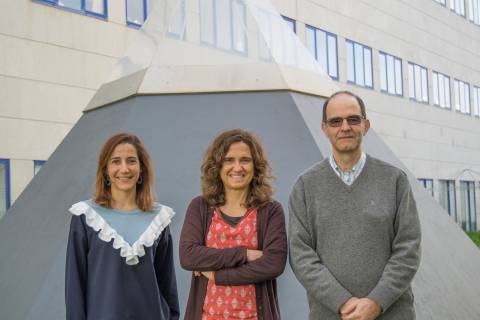
Researchers at ITQB NOVA have been studying hydrogenases, the enzymes that produce or consume hydrogen, to understand why these proteins have such high efficiency and tolerance to oxygen. In a study published in Nature Chemical Biology, researchers from Inês Cardoso Pereira Lab and Pedro Matias Lab unraveled the essential role played by a selenocysteine aminoacid at the active site, which gives some enzymes a very high activity and tolerance to oxidative damage. It is also shown that, unexpectedly, this aminoacid is key for the incorporation of the Ni atom into the active site.
Hydrogenases are enzymes that catalyze the simplest of chemical reactions: the reversible conversion of protons and electrons to molecular hydrogen. When performed chemically this reaction requires a high input of energy, so it is fascinating to understand how Nature performs this conversion with extremely high efficiency and in mild conditions.
Hydrogenases are attractive enzymes for biotech applications, namely in biofuel cells, for electricity production from hydrogen, or for hydrogen production from renewable sources like solar energy. However, these applications are mostly hampered by the high sensitivity of these enzymes to oxygen.
"We already knew that selenium was very important for the activity of this hydrogenase, but we didn't know exactly how much. What we did was to convert a [NiFeSe] hydrogenase into a standard [NiFe] type, by changing the Ni ligand selenocysteine (Sec) to a cysteine (Cys), and see the effect it had on its properties", said Inês Cardoso Pereira, corresponding author. "We then managed to crystallize this engineered protein in several forms, which gave us a molecular understanding of the changes induced by oxygen, showing they were much more severe in the absence of selenium” added Pedro Matias. “It was exciting and totally unexpected to find that removing selenium led to a dramatic decrease in the level of Ni in the active site. This shows that selenocysteine is directly involved in the Ni incorporation process, which is an important finding towards understanding the biosynthesis of this enzyme” adds Inês Cardoso Pereira.
This work was part of the PhD thesis of ITQB NOVA alumnus Marta C. Marques (graduated in December 2015) and is also part of a long-standing collaboration between these two labs and Cláudio M. Soares Lab, in a project that has received funding from three FCT grants.
Exciting applications of the [NiFeSe] hydrogenase are also being developed together with the group of Antonio de Lacey at the Institut de Catalysis of CSIC in Madrid. These include the electrocatalytic production of ATP and photocatalytic production of hydrogen, which were both published in high impact journals in 2016.